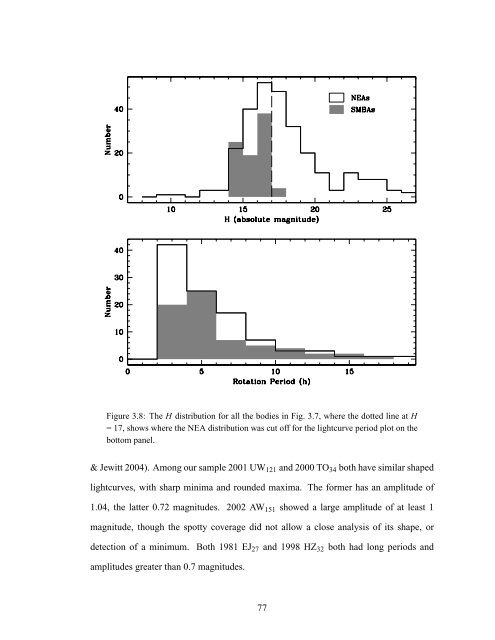Forming Binary Near-Earth Asteroids From Tidal Disruptions
Forming Binary Near-Earth Asteroids From Tidal Disruptions
Forming Binary Near-Earth Asteroids From Tidal Disruptions
You also want an ePaper? Increase the reach of your titles
YUMPU automatically turns print PDFs into web optimized ePapers that Google loves.
Figure 3.8: The H distribution for all the bodies in Fig. 3.7, where the dotted line at H= 17, shows where the NEA distribution was cut off for the lightcurve period plot on thebottom panel.& Jewitt 2004). Among our sample 2001 UW 121 and 2000 TO 34 both have similar shapedlightcurves, with sharp minima and rounded maxima. The former has an amplitude of1.04, the latter 0.72 magnitudes. 2002 AW 151 showed a large amplitude of at least 1magnitude, though the spotty coverage did not allow a close analysis of its shape, ordetection of a minimum. Both 1981 EJ 27 and 1998 HZ 32 both had long periods andamplitudes greater than 0.7 magnitudes.77












